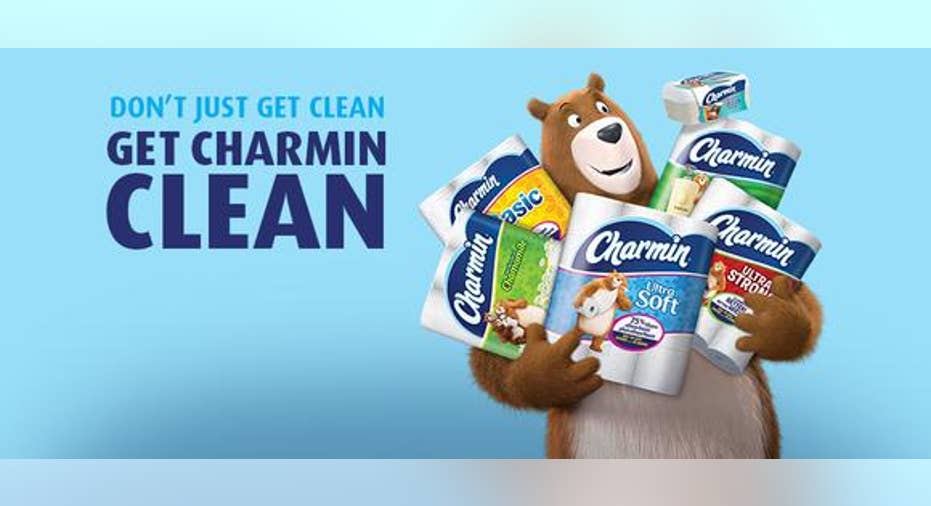4 Weird Tricks Companies Use to Boost The Bottom Line

While the easiest way to raise profits might be to sell more, companies often find clever ways to eke out more money from the same amount of business.
Some aren't very sexy or particularly amusing. Swapping out cheaper materials can raise the bottom line, as can moving production to a location that offers tax breaks. Others, however, are slightly more clever and, from a consumer's point of view, perhaps a bit more openly villainous.
We've all opened a package to find that it's more box than whatever is supposed to be inside, but that's a pretty pedestrian trick that doesn't seem to faze consumers anymore. Some of these may shock you, or, if you're a shareholder of any of the mentioned companies, perhaps you'll tip your cap to their cleverness.
More roll, less paperOne clear way to add profit into any sale is giving people less of the item for the same price. If that happens too obviously, then consumers may revolt, or at least look for alternatives. In the case of toilet paper, a number of manufacturers, including Procter & Gamble , have quietly changed dimensions to make less paper seem like the same amount, The Los Angeles Times reported.
The bear that apparently uses Charmin may be in for a surprise. Source: Charmin.
A reader identified as Crandle wrote to the paper to detail the issue.
"The old standard for a single sheet of tissue was 4 and 1/2 by 4 and 1/2 inches, a nice square," he said. "Some tissue companies have changed the length of the sheet to 4 inches, with a width of 4 1/2 inches, no longer a square."
He also noted that some brands have cut the cardboard roll the paper sits on back to 4 inches. Crandle estimated that the change resulted in about 26% less paper, and a P&G spokesman confirmed to the paper that the size of the roll was indeed smaller.
"You don't need to use as much," the company declared.
That may be true, but by giving you less for your bottom, the companies involved (and it's not just P&G) are enhancing theirs.
Change the accessoriesOne of the most egregious ways a company can pad its bottom line is to introduce a new model of a popular product that requires all new accessories and/or cables. This can be a revenue driver not just for the brand that makes the change, but also its partners.
Apple's Lighting cable starts at $19. Source: Apple.
The most famous recent example came in 2012, when Apple swapped out the iPhone's 30-pin connector for the now-standard eight-pin Lightning connector. This move forced people who wanted to upgrade to the then-new iPhone 5 to re-accessorize.
Apple justified the new connector as being more durable than its somewhat fragile predecessor, but that was probably little comfort for the people who had to buy new car chargers, backup power cords, and other accessories.
Lower sales equals less cerealAmericans are eating less cold breakfast cereal, and that has forced the companies that make it, including General Mills ,Post Holdings, and Kellogg , to consider clever ways to lower costs costs while maintaining sales.
One of those methods is simply putting less cereal in the same size box. TheGroceryGame.com, a coupon and saving website, found through spot checks that the sizes of many small- and medium-sized cereal boxes or bags have fallen down by an ounce or two over the past couple of years, NBCNews.com reported.
A Kellogg's representative even acknowledged that this was happening in response to a complaint on one of its message boards from a customer who identified herself as Joy, asking directly whether there was less cereal in the boxes. "Some package sizes have been reduced due to high commodity prices and other related costs," the representative said. "We do this instead of raising the price of our products, as it allows us to keep our food available to more people."
Of course, it would also save money to actually shrink the box, but that would let consumers know that something is up.
It looks like, but it isn'tAs we pass Black Friday, one common method retailers and manufacturers use to pad their bottom lines is building a cheaper, lower-feature model of a popular device. This item can sell for less money while preserving profits because consumers don't generally check minute differences in model names.
This approach is very common when it comes to TVs, where consumers tend to value price and screen size more than anything else. That might make them overlook a knockoff model that has cheaper materials and may lack certain features, such as an extra HDMI port.
"They'll look similar, but they won't be as advanced,"Matthew Ong, a senior retail analyst for NerdWallet.com, told Reuters.
It's not that these TVs, appliances, or other items aren't good deals, but they may not be exactly what they seem. For retailers these models might just be a way to lure people to the store to uspell them. In the case of the manufacturer, it could be an opportunity to cut costs to match a price point at which more people will buy.
Either way, it's another example of corporate cunning aimed at enhancing the bottom line.
The article 4 Weird Tricks Companies Use to Boost The Bottom Line originally appeared on Fool.com.
Daniel Kline owns shares of Apple. He has fallen for the knockoff TV trick. The Motley Fool owns shares of and recommends Apple and Post Holdings. The Motley Fool recommends Procter & Gamble. Try any of our Foolish newsletter services free for 30 days. We Fools may not all hold the same opinions, but we all believe that considering a diverse range of insights makes us better investors. The Motley Fool has a disclosure policy.
Copyright 1995 - 2015 The Motley Fool, LLC. All rights reserved. The Motley Fool has a disclosure policy.



















